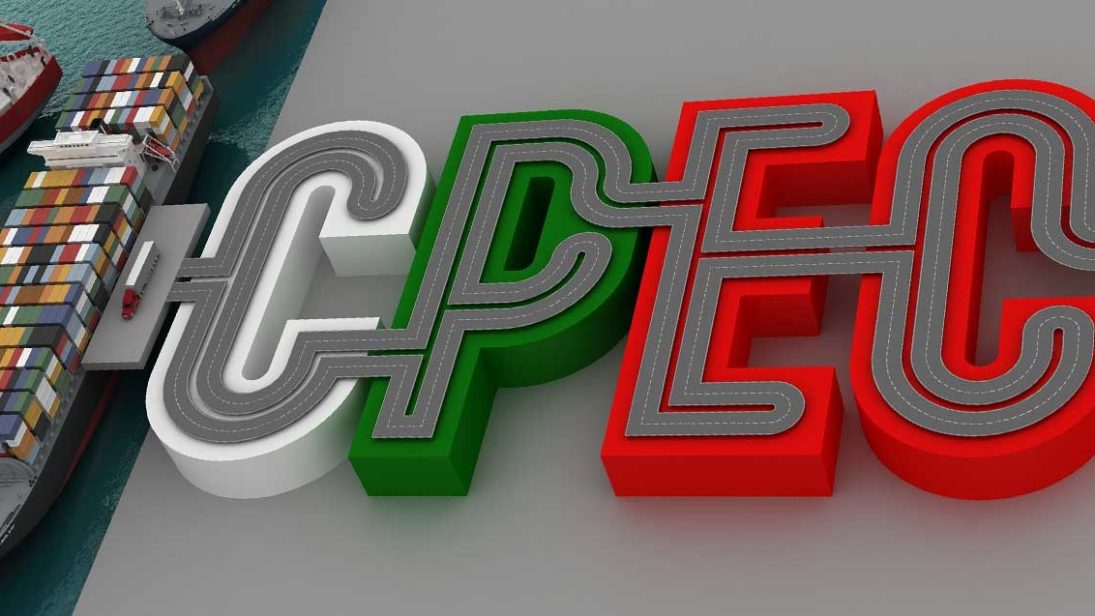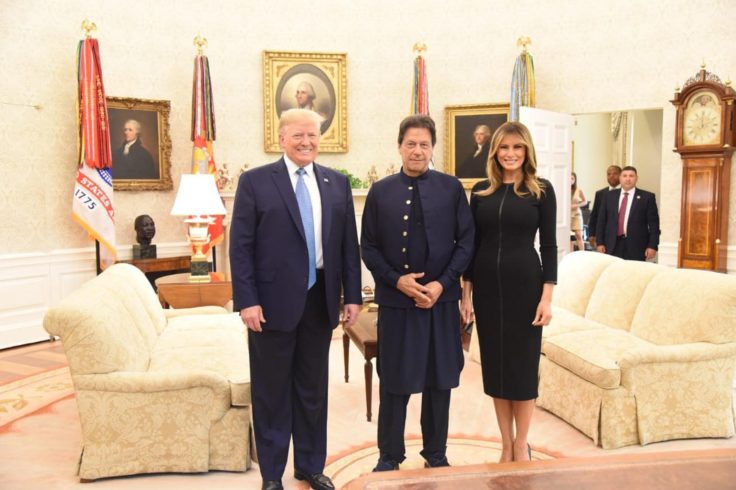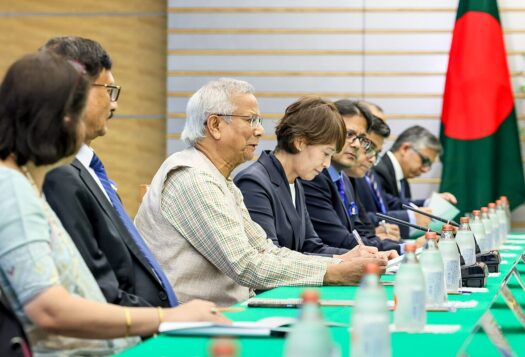
As the China-Pakistan Economic Corridor (CPEC) transitions into its second phase, Pakistan is optimistic about the economic benefits it could bring. After battling terrorism at home for a long time, Pakistan is now striving to reboot its economy and hopes CPEC will be its “gateway to prosperity.” It sees this new phase of CPEC as crucial for reviving its industrial sector and bolstering agriculture. And despite external criticisms of the project, Pakistan credits CPEC for rescuing it from “rock bottom” by bringing investments into the country, increasing technology transfer between Pakistan and China, and helping Pakistanis develop marketable skills.
However, as appealing as this second phase sounds, the project has raised concerns such as lack of transparency, contracts not awarded on competitive bids, and elevated project costs with significant debt burden for Pakistan, which make it imperative for the country to consider diversifying its economic relationships beyond China. An obvious option would be the United States, which last year offered to expand its business ties with Pakistan. The United States’ renewed interest in Pakistan can also enable Islamabad to reap additional strategic benefits from its association with Washington, which could be far more significant than the potential increase in trade. While engaging with China and the United States simultaneously could be an arduous task for Pakistan given their geostrategic competition, the strategic thinking in both Beijing and Washington seems to provide space for Pakistan to seek benefits from both to fuel its economic growth.
While engaging with China and the United States simultaneously could be an arduous task for Pakistan given their geostrategic competition, the strategic thinking in both Beijing and Washington seems to provide space for Pakistan to seek benefits from both to fuel its economic growth.
Constraints Imposed by CPEC
Though Phase-II of CPEC promises significant benefits for Pakistan, the degree to which they can be realized could be limited by China’s inequitable business practices and their impact on Pakistan’s macroeconomic stability.
While CPEC was expected to provide a fillip to Pakistan’s small and medium enterprises, an assessment of the first phase suggests that local Pakistani businesses actually suffered due to the megaproject. During Phase-I, a bulk of the construction contracts were awarded to China’s state-owned enterprises, and local firms have argued that they were not given a fair opportunity to engage in these projects. Further, Beijing heavily incentivized Chinese companies to operate in Pakistan by offering easy access to capital through public banks, while no such incentives were available to local Pakistani businesses, rendering their bids uncompetitive. It remains to be seen if these issues can be remedied in the second phase of CPEC.
Phase-I also forced Pakistan to absorb a series of unforeseen fallout from the project. The influx of Chinese machinery and raw materials into Pakistan during the first phase increased its trade deficit with China and widened the country’s current account deficit at a time when Pakistan’s economy was already vulnerable. Additionally, despite promises by both Beijing and Islamabad that CPEC would bring massive employment to Pakistan, Phase-I projects were heavily dependent on Chinese labor. While efforts are being made to rectify this in Phase II, another significant influx of Chinese imports and laborers into Pakistan cannot be ruled out, and could create similar complications ahead for Islamabad.
Diversifying Economic Relationships
The constraints outlined above that Pakistan faces due to CPEC suggest that it needs to diversify its economic partners in order to secure its interests and not depend on one investment alone. With this in mind, Pakistan could consider the United States’ offer to expand their economic ties. During Prime Minister Imran Khan’s visit to Washington in July 2019, the economic dimension of the U.S.-Pakistani relationship received attention, with Senator Lindsey Graham pointing to the trade potential between the two countries. In November 2019, U.S. Assistant Secretary of State Alice Wells revealed that fifteen trade delegations were set to visit Pakistan in 2020, and in February this year, U.S. Secretary of Commerce Wilbur Ross was in Pakistan for discussions on how to expand their trade and investment relationship.
Extending commercial ties with the United States has the potential to enable considerable investments in the Pakistani Liquefied Natural Gas (LNG) sector, where there is great demand. For instance, an American firm Excelerate is ready to invest more than USD $300 million to upgrade the storage re-gasification unit in Pakistan’s first LNG terminal in Karachi. In the agriculture sector, Cargill Corporation has announced that it would invest USD $200 million in the next few years to boost innovation in Pakistan’s dairy industry. In addition to these potential investments, the United States is the largest recipient of Pakistani exports. Pushing for a free trade agreement with the United States—on which there have been some discussions between the two sides—and increasing exports to the United States would help Pakistan reduce its widening current account deficit.
This renewed U.S. interest and improvement in the bilateral relationship could also have broader gains for Pakistan beyond the direct economic ones. For instance, Prime Minister Khan recently thanked President Trump for his support to Pakistan at the IMF, ostensibly for the emergency financing that the IMF provided to the country to combat COVID-19. In addition, Washington’s appreciation of Islamabad’s positive role in brokering U.S.-Taliban negotiations has helped bolster Pakistan’s image internationally.
Thus, this reinvigorated U.S. emphasis on Pakistan can accrue certain advantages to Islamabad and mitigate overdependence on China, but it also comes with some challenges that Pakistan would have to navigate.

Challenges of Dual Engagement
Although Pakistan has historically balanced relations with China and the United States, the geopolitical dynamics have changed. Both China and the United States are engaged in a much sharper form of geostrategic competition in the region, striving to counterbalance the influence of the other. In this scenario, for Pakistan to engage with China and the United States at the same time could be a difficult task.
For one, the degree to which the United States can cooperate with Pakistan is restricted by the United States’ strategic thinking related to the Indo-Pacific region. The United States is working with India to offset China’s efforts to become a regional power, primarily through the Belt and Road Initiative (of which CPEC is a subset), a project Washington considers as antithetical to the idea of a free and open Indo-Pacific. With the Indo-U.S. strategic partnership unlikely to wane in the near future, it is not clear whether the United States would be able to address Pakistan’s concerns regarding India, especially in the strategic realm, while also sufficiently improving its ties with Islamabad.
Further, China’s outsized say on third-party involvement in CPEC suggests the lack of autonomy Pakistan faces in decisionmaking related to the project. This could complicate Pakistani attempts to join up CPEC with U.S. projects or utilize U.S. investments in any sectors that China considers sensitive. For example, although Pakistan had initially stated that Saudi Arabia’s proposed oil refinery in Gwadar would be a part of CPEC, the then information minister had to later backtrack, stating the oil refinery would be part of a separate bilateral agreement, due to China’s seeming seeming disapproval.
Both China and the United States are engaged in a much sharper form of geostrategic competition in the region, striving to counterbalance the influence of the other. In this scenario, for Pakistan to engage with China and the United States at the same time could be a difficult task.
Lastly, the economic impact of COVID-19 on the United States and China is worth noting, primarily because it will constrain both nations’ ability to economically partner with Pakistan. Already the pandemic has caused a slump in China’s economy. With Beijing facing a significant cut in exports, the pandemic could squeeze its ability to continue to fund BRI projects, and it may have to rethink some of its CPEC investments. Although the full extent of the impact of the virus on the United States’ economy would not be known until later in the year, signs of recession in the country are already showing. This may mean that the business partnerships offered by the United States before the virus are not on offer in the wake of the virus.
Despite these potential obstacles, however, Pakistan would do well to note that China is ambitious to complete BRI, with CPEC as its flagship project, and would not abandon CPEC or let it meet the fate of failure. Also, if China continues to deepen ties with Pakistan, the United States cannot ignore Islamabad given its strategic thinking in the Indo-Pacific. The United States is unlikely to allow Pakistan to become reliant on China, fearing Chinese influence in Pakistan’s policy decisionmaking.
While China has remained an important ally for Pakistan, with CPEC epitomizing their deepening economic ties, it is crucial for Islamabad to realistically examine the pros and cons of the project and continue to engage with Beijing on these issues. Meanwhile, to convert U.S. interest into tangible investments, Pakistan would have to work to take the necessary regulatory steps to make it an attractive investment destination for American companies. Taking these steps would ensure that Pakistan is able to derive the full benefits of diversifying its economic relationships.
***
Image 1: Government of Pakistan
Image 2: Government of Pakistan


